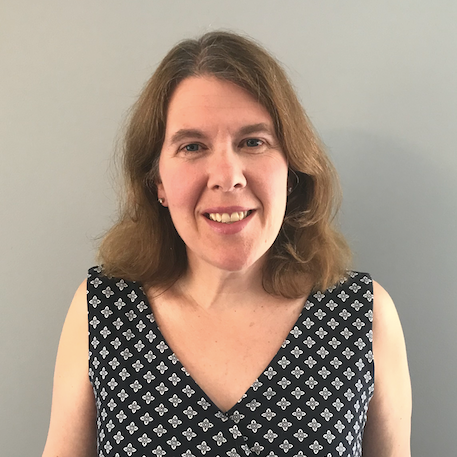Next Gen Navigator
Overcoming Isolation by Joining Professional Learning Communities
By Sarah English
Posted on 2020-09-24
Disclaimer: The views expressed in this blog post are those of the author(s) and do not necessarily reflect the official position of the National Science Teaching Association (NSTA).
A common theme I hear when talking to fellow science teachers is that they feel like “islands” at their schools. In smaller school districts, being the single content-area specialist can cause this “island” feeling, as can having the responsibility of teaching stand-alone elective courses like environmental science or forensics. Even in larger districts, educators shifting to the Next Generation Science Standards (NGSS) say they feel they are alone or that they have no one to collaborate with when working alongside colleagues who are not yet ready (due to lack of support or understanding of contemporary research) to implement three-dimensional teaching and learning.
How does one go from being an island to an archipelago? Or how does one overcome feeling isolated by inviting innovative educators to their island? Now more than ever, educators need the tools to learn how to join or build learning communities that provide positive emotional-support structures while also serving as content resource providers and sounding boards.
In 2019, through my school’s Teacher Center, I formed a chemistry educator professional learning community in my area that focused on implementing the New York State P–12 Science Learning Standards (NYSSLS,the New York State version of NGSS). I e-mailed the ChemBond listserv community, and Western New York (WNY) ChemConnect was created. The group meets monthly and works on collaborative projects, sharing our collective experiences with implementation. We celebrate successes and offer support when lessons do not go as planned.
Then COVID-19 happened. All my face-to-face interactions abruptly ended: no state, regional, or national conferences and no meetings with local chemistry teachers. Words cannot capture how difficult the transition was from working side-by-side with trusted friends to staring at a computer screen from my pseudo office, a dining room table.
I turned to the virtual world for support. I became active in Facebook communities. From Advanced Placement (AP)–focused groups to general chemistry groups, I received resources and support. The power of these Facebook groups motivated me to start NYSSLS Chemistry with Marty Palermo (@Mrpchemistry). Yet Facebook lacked the personal interaction I craved.
I took to Twitter and became involved in #NGSSchat. Once TweetDeck proficient, I looked forward to the biweekly chats on Thursdays at 9 p.m. Eastern Time. I started to recognize contributors. I was interacting again with fellow educators from all over the world. I began to feel reconnected.
The Ambitious Science Teaching (AST) Book Club originated from one of these #NGSSchats. I had read about AST, but had never participated in a book club, ever. Suzanne Sullivan (@sbottasullivan) brought this amazing group together, along with a few of the AST authors.
Since the group formed at the beginning of May, it has met almost every Sunday. From sharing resources, to providing support throughout the week on Twitter, to serving as emotional “shoulders” to bear the burden of challenging teaching situations, this group exemplifies high-quality, continuous professional development. One tweet expressing interest in a Twitter chat was all it took to make the group happen.
Facebook and a Science Teachers Association of New York State (STANYS) friend, Emily Hart (@Ihartchem), introduced me to AP Teach. AP Teach, an organization based at Carnegie Mellon University in Pittsburgh, Pennsylvania, aims to support AP Chemistry teachers through online professional development meetups. This group is run by AP chemistry teachers for AP chemistry teachers. AP Teach takes collaborative support to a whole new level. The hour-long Zoom meetings, featuring a quick presentation followed by the opportunity to talk in small breakout rooms, are priceless.
Participating in a collaborative group, whether in person or virtually, is not easy for everyone. Some educators are made for the world of quick tweets, confident Facebook posts, and fearlessly joining a Zoom call with their video turned on. Others are more comfortable lurking and reading posts or listening while muted with their video turned off on a Zoom call. Participating in a group requires openly venturing into a collaborative space and acknowledging that you need support.
The important thing to remember is that most educators join these groups to be part of a larger movement of supporting one another to become better. As one member of my AST Book Club group said, “It’s my therapy group.” Consider finding your group, whether virtually or in person, and know that you are always welcome to join my archipelago.

Sarah English is a Regents and Advanced Placement chemistry teacher at Sweet Home High School in Amherst, New York. She started her career in education as a Peace Corps volunteer in The Gambia, West Africa (1995–1997) as a math teacher after graduating from the University of Rochester. English earned a PhD in science education and has been an adjunct professor at both the University at Buffalo and at Buffalo State College, where she has taught science methods classes. She is a director for the Western Section of the Science Teachers Association of New York State (STANYS) and founder of the organization WNY ChemConnect, a professional learning community. Her current focus is working with other science educators to implement the New York State P–12 Science Learning Standards.
Note: This article is featured in the September 2020 issue of Next Gen Navigator, a monthly e-newsletter from NSTA delivering information, insights, resources, and professional learning opportunities for science educators by science educators on the Next Generation Science Standards and three-dimensional instruction. Click here to sign up to receive the Navigator every month.
The mission of NSTA is to promote excellence and innovation in science teaching and learning for all.
NGSS Teacher Preparation Teaching Strategies High School


